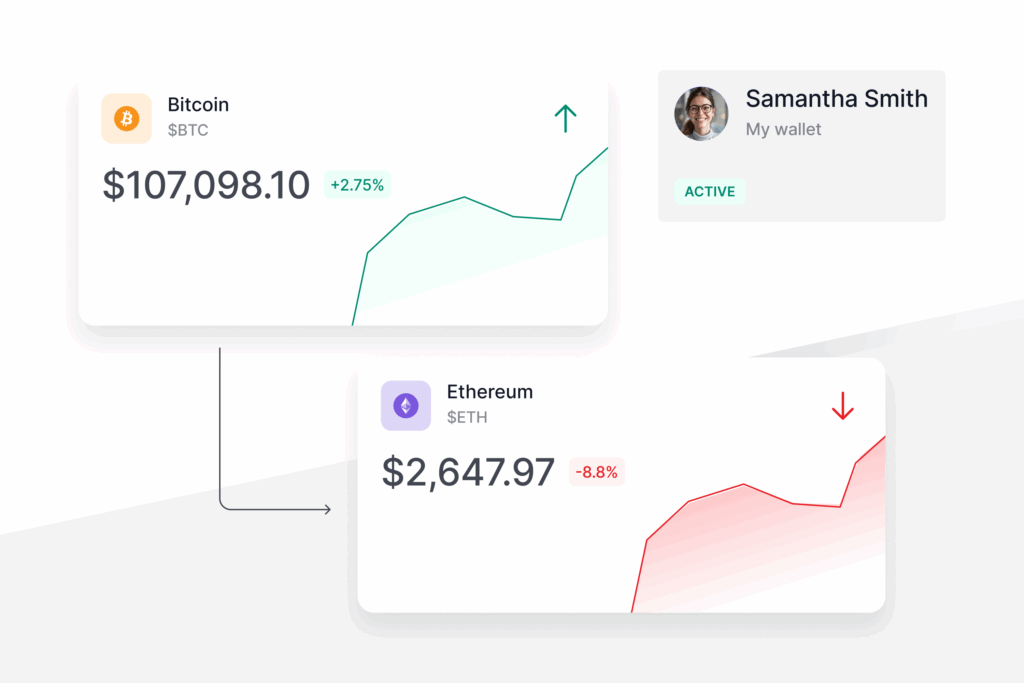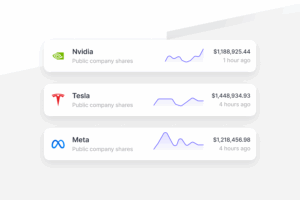
FEATURED ARTICLE
Tax Planning for Realized Gains and Ordinary Income
Tax planning strategies for realized gains and ordinary income

Tax planning strategies for realized gains and ordinary income


Investing in oil and gas drilling might not be the first thing that comes to mind when you think of diversifying your portfolio. But this sector offers significant tax savings for high-bracket taxpayers. In order to encourage energy production (whether it’s renewables or traditional energy sources), the federal and state governments offer generous tax incentives for energy projects. In this article, we’ll delve into the world of oil and gas drilling investments and explore how they work, the tax benefits (if you want to see the potential returns, you can use our calculator here), and the associated risks and limitations.
Oil and gas well investments allow investors to put their money into the production and development of oil and gas wells. This isn’t about buying stock in big oil companies like Exxon or Shell. It’s about funding the extraction of these resources right from the ground. Investors can invest directly in a drilling operation or through partnerships that deal with the development and operation of wells. By doing so, they receive huge benefits that are meant to encourage domestic energy investment and production:
Oil and gas projects have operating costs. As an investor in an oil and gas drilling project, you can deduct those operating costs as depreciation. Oil and gas projects generate two types of depreciation: intangible drilling costs (IDCs) and tangible drilling costs. Intangible drilling costs include labor, fuel, and chemicals. Tangible drilling costs include the cost of drill bits, the drilling rig, and the casings. About 90% of drilling costs are intangible and the other 10% are tangible.
That distinction matters because you can deduct all of intangible drilling costs in the first year of an investment. So if you invest $100,000 but have $90,000 in intangible drilling costs, you can deduct that $90,000 from your salary, capital gains, or business income on your taxes that first year. The remaining “tangible costs” like equipment and pipes get deducted over seven years. In other words, if you are taxed at a 50% marginal tax rate, between federal and state tax savings you will recoup about 45% (90% IDC depreciation * 50% tax rate) of your investment in the first year from just tax savings.
Critically, IDCs work the same for everyone at the federal level and in most states. However, there are a few states (below) that do not fully conform to federal tax treatment regarding IDCs. In these states, the deduction for depreciation applies differently for state income tax purposes.
Comparison: Federal vs. State Treatment of IDCs
| State | Federal Law (IDCs) | State Law (IDCs) | Amortization/Depreciation Schedule (Asset Life) |
|---|---|---|---|
| California | Fully deductible in year 1 | TBD – California just passed a bill updating their application | TBD |
| Pennsylvania | Fully deductible in year 1 | Capitalized and depreciated over asset life | Often 10 to 20 years |
| New Jersey | Fully deductible in year 1 | Capitalized and depreciated over asset life | Often 10 to 20 years |
| Massachusetts | Fully deductible in year 1 | Capitalized and depreciated over asset life | Often 10 to 20 years |
| North Carolina | Fully deductible in year 1 | Capitalized and depreciated over asset life | Often 10 to 20 years |
The tax code differentiates between “active” and “passive” activities. When you have depreciation from an active activity, you can use that depreciation to offset any income, including W-2 income. When you have depreciation from a passive activity, you can only use that depreciation to offset passive income, like income from a rental property or a private equity investment. What makes oil and gas well investments so powerful is that they are active, which means their depreciation can be used to offset W-2 income or other business income, and yet they do not require an material participation requirements. This is significant. In most contexts, whether someone is considered “active” or “passive” depends on the extent to which that person materially participates in the activity. For example, if you invest in real estate, you may have to spend at least 750 hours per year in order to be deemed active. At that point, it’s a full-time job! The barrier for material participation in solar projects is lower: 100 hours per year. But there are no material participation requirements for oil and gas drilling investors, so no matter how involved you are, your investment can be treated as “active.”
In practice, the oil and gas fund will deem you to be either an active investor or a passive investor. Typically, investors are deemed active during the first year of an investment, when the majority of depreciation is taken, so that they can use the depreciation to offset your other income. But after the first year, once the vast majority of the depreciation has been taken, investors are deemed to be passive, limiting their potential liability in the event that the oil and gas project is subject to a lawsuit.
These investments have another major tax benefit: mineral interest depletion. Investors in oil and gas wells can deduct 15% of their gross income from oil and gas production from their taxable income, further enhancing the investment’s after-tax returns. In other words, if you generate $10,000 in taxable income from an oil well, you will only be taxed on $8,500 of that income. The other $1,500 is tax free.
To claim this deduction, you need to qualify as an “small producer,” which limits how much you can produce each year. Fortunately, most savvy oil and gas well drillers with individual investors have structured their operations to meet these requirements.
There are two other compelling benefits of investing in oil and gas wells:
To understand why oil and gas well investments have become so popular in the past few years, it’s important to understand the larger context. Recent technological developments have allowed oil producers to extract more oil, and at a lower cost, than ever before.
Nowhere is that more apparent than in the Permian Basin. The Permian Basin spans about 86,000 square miles in West Texas and Eastern New Mexico. In 2010, the U.S. was producing about 5.5 million barrels of oil per day nationwide, with the Permian Basin was producing a much smaller amount. In 2023, U.S. production exceeded 12 million barrels per day. That year, the Permian Basin produced over 5.6 million barrels of oil per day, accounting for about 40% of total U.S. oil output.
Horizontal drilling technology is largely responsible for this growth. Traditional vertical wells drill straight down into an oil reservoir, limiting the amount of oil that can be extracted. Horizontal drilling, however, allows companies to drill sideways for miles, reaching multiple layers of oil-rich rock from a single well. In the Permian Basin, a horizontal well can reach up to two miles horizontally. A single horizontal well in the Permian Basin can produce over 1 million barrels of oil in its lifetime, compared to just 150,000–200,000 barrels from a traditional vertical well. This means horizontal drilling can boost production by 5 to 6 times compared to older techniques.
Hydraulic fracturing, or “fracking,” further enhances the productivity of wells by injecting water, chemicals, and sand into the rock at high pressure, creating fractures that allow oil and gas to flow more freely. This technique has made it possible to extract oil from tight shale formations cost effectively.
In 2014, the break-even price for many U.S. shale producers, including those in the Permian Basin, was over $60 per barrel. As fracking technology has improved, these costs have plummeted. By 2023, many Permian Basin producers had break-even costs as low as $30 per barrel. Some operators, especially those with well-optimized sites, can operate profitably at prices as low as $25 per barrel.
Oil and gas well investments are not without some risks – and limitations – that you should consider:
Need some help to understand if Oil & Gas Investments are right for you?
Let’s look at an example to see how these tax benefits can save you money. Jill, a single Californian, has a job where she earns $500,000 per year. She decides to invest $200,000 to acquire a working interest in an oil well.
In the first year, she can deduct $176,000 of depreciation. That will reduce her taxable income from $500,000 to just $324,000. Jill would have owed about $211,000 in taxes on her full $500,000 salary. But after her deductions, she now only owes about $123,000 in taxes – a savings of $88,000 in just the first year! And this doesn’t even include (a) the future deductions she can take on the remaining tangible costs over the next six years or (b) the fact that, thanks to the 15% depletion deduction, only 85% of her annual income from the oil well will be subject to income tax.
If you’d like to see a more detailed real-life case study and better understand the potential financial impact, read through this case study. If you want to understand your potential returns, you can use our calculator here.

Investing in oil and gas wells offers unique tax advantages tailored for high-bracket taxpayers as leveraging the tax benefits can significantly offset their taxes. Understanding the nuances of oil and gas well investments is crucial for maximizing potential returns and diversifying investment portfolios effectively.
We’ve built a platform that makes advanced tax planning – once reserved for ultra-high-net-worth individuals – accessible to everyone. With Valur, you can reduce your taxes by six figures or more, at less than half the cost of traditional providers.
From selecting the right strategy to handling setup, administration, and ongoing optimization, we take care of the hard work so you don’t have to. The results speak for themselves: our customers have generated over $3 billion in additional wealth through our platform.
Want to see what Valur can do for you or your clients? Explore our Learning Center, use our online calculators to estimate your potential savings or schedule a time to chat with us today!